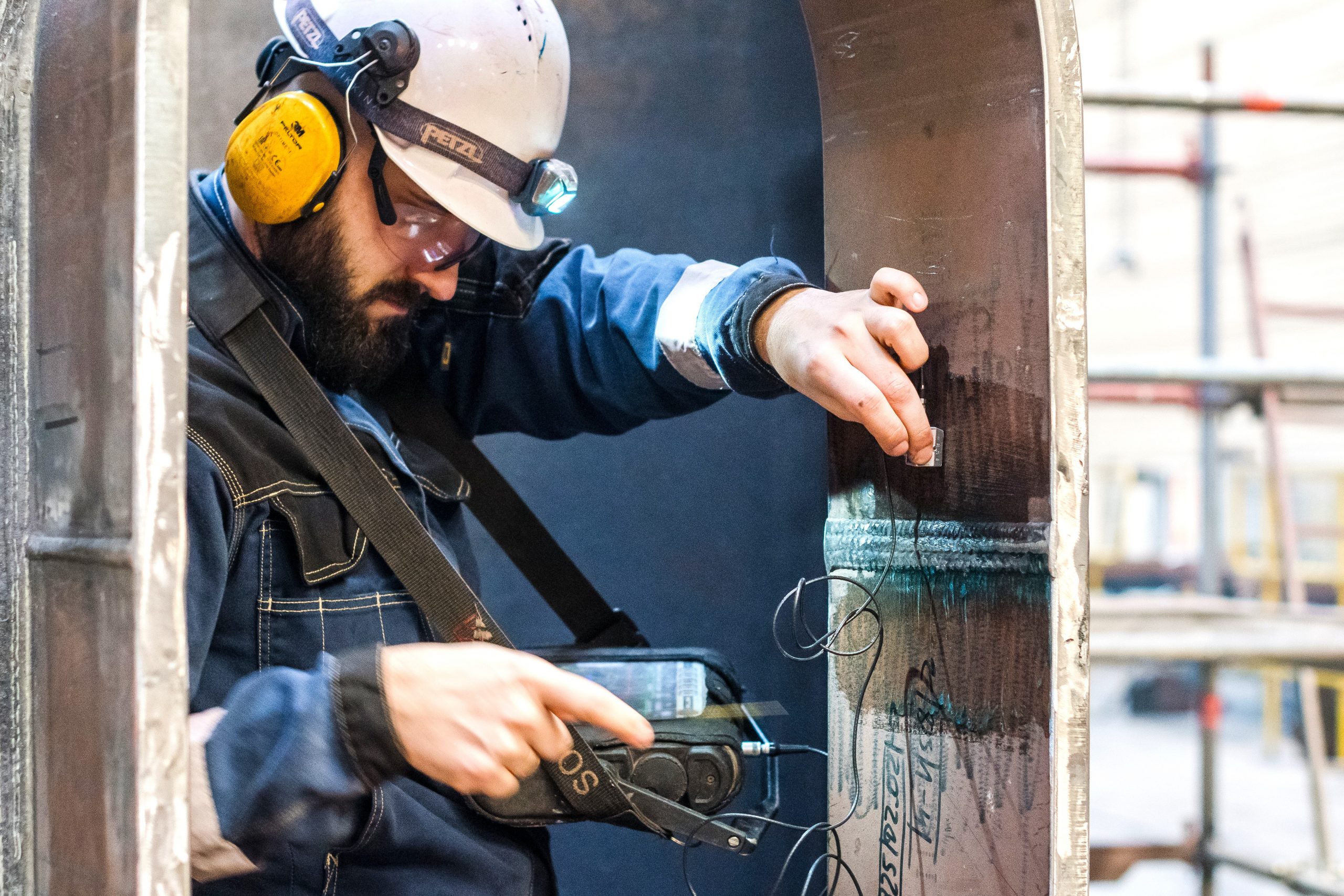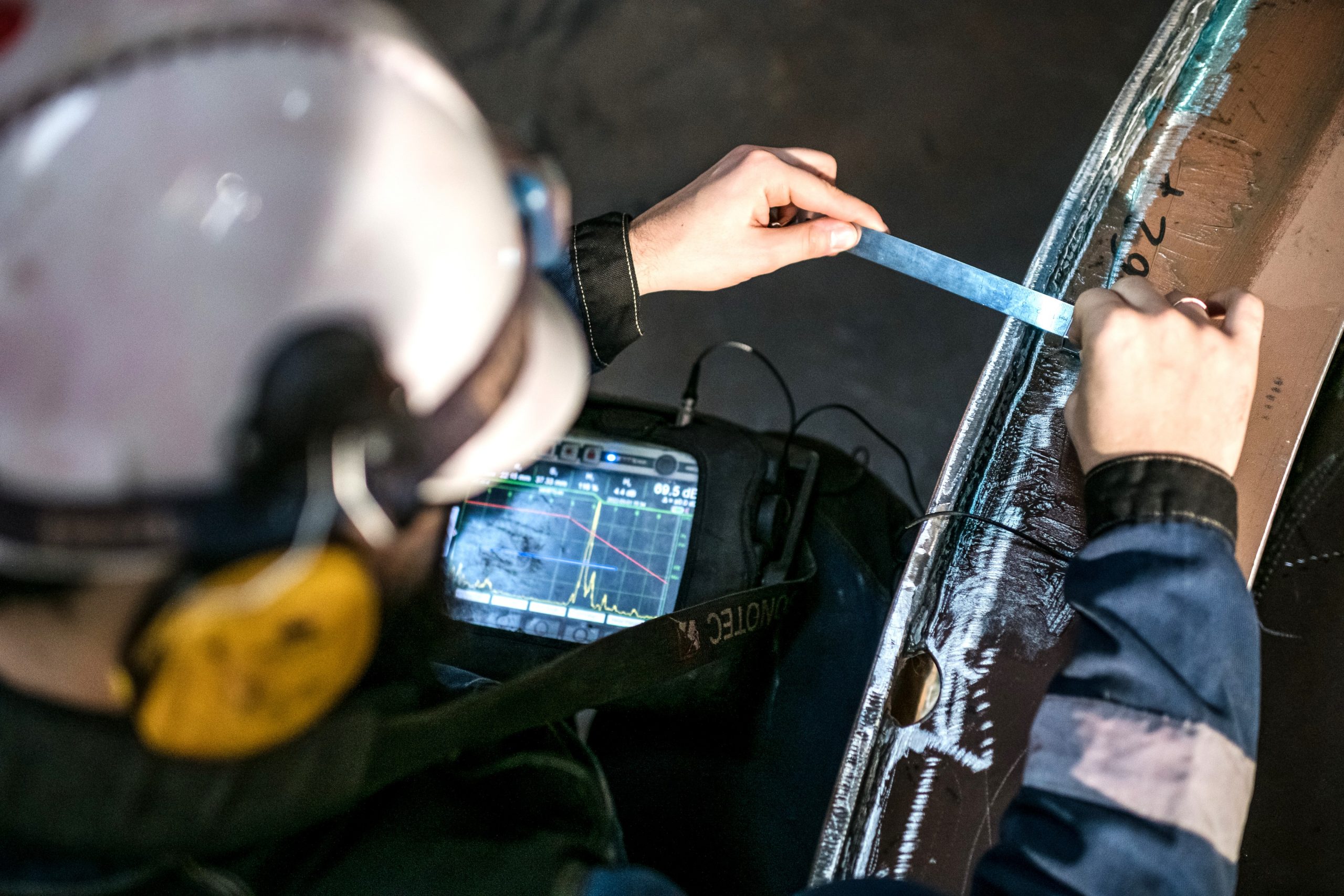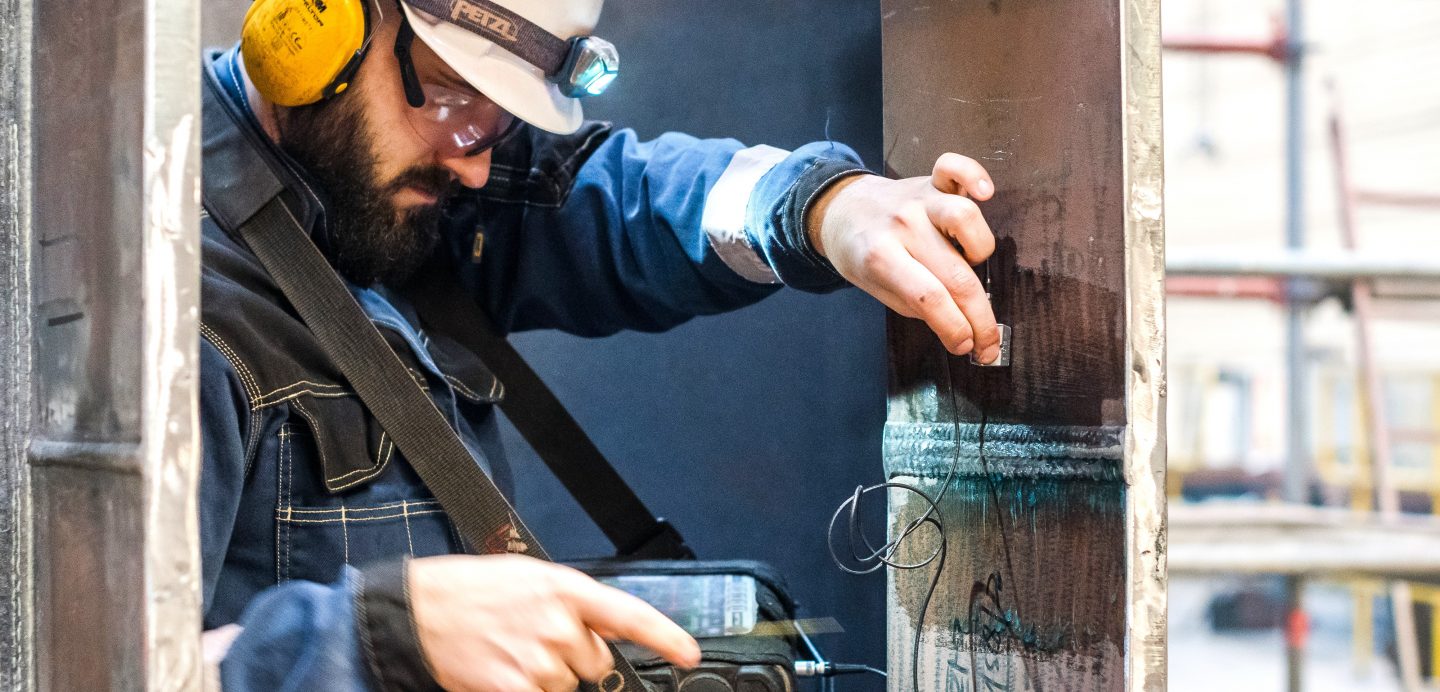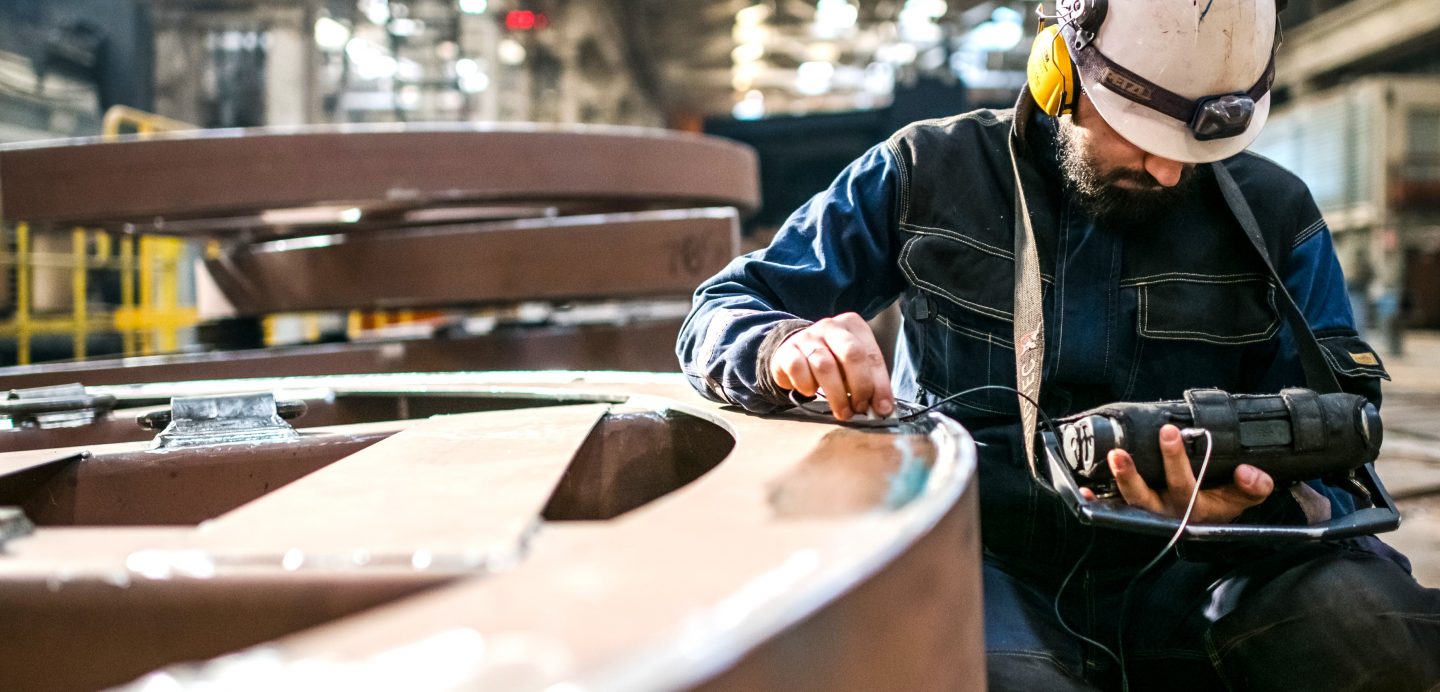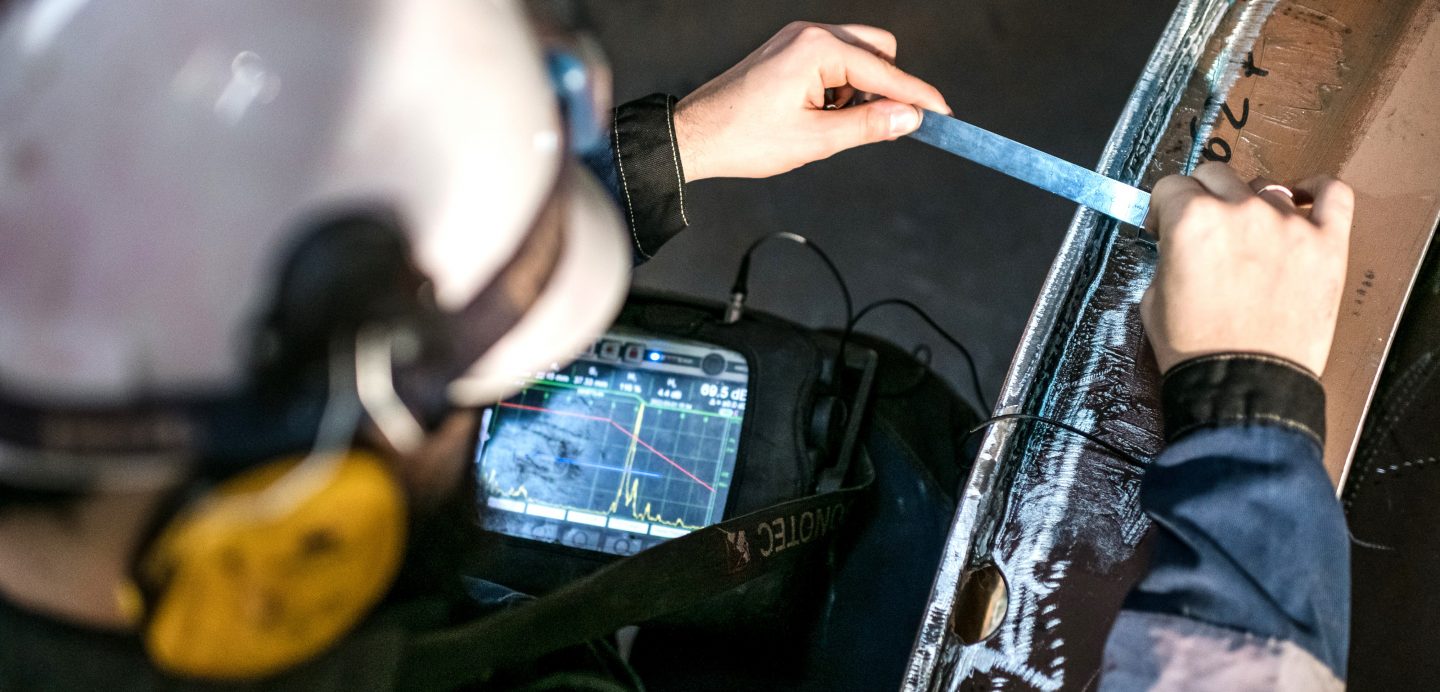Ultrasonic testing is one of the most common non-destructive testing methods for the detection of internal defects, such as lack of fusion, insufficient penetration, cracks, and metal lamination, in welds of metals or structures. This method is also known as ultrasonic control and ultrasonic defectoscopy.
This type of inspection may be applied to products of various shapes, including castings, forgings, as well as welds and composite materials. The method is used for testing aluminum, carbon steel, and stainless steel, where the thickness of the product to be tested is 8mm and above. Products thinner than 8mm can also be tested based on individually adjusted technology. Ultrasonic tests are also used for the detection of lamination defects in steel flat products (LST EN 10160), for the characterization of the type of defect in welds of structures (LST EN ISO 23279), and for the measurement of metal thickness.
The specialists of WESTERN CENTRAL LABORATORY use General Electric ultrasonic defectoscopes, such as the Krautkramer USM 36, USM Go+, and Phasor XS, for the provision of ultrasonic testing services.
